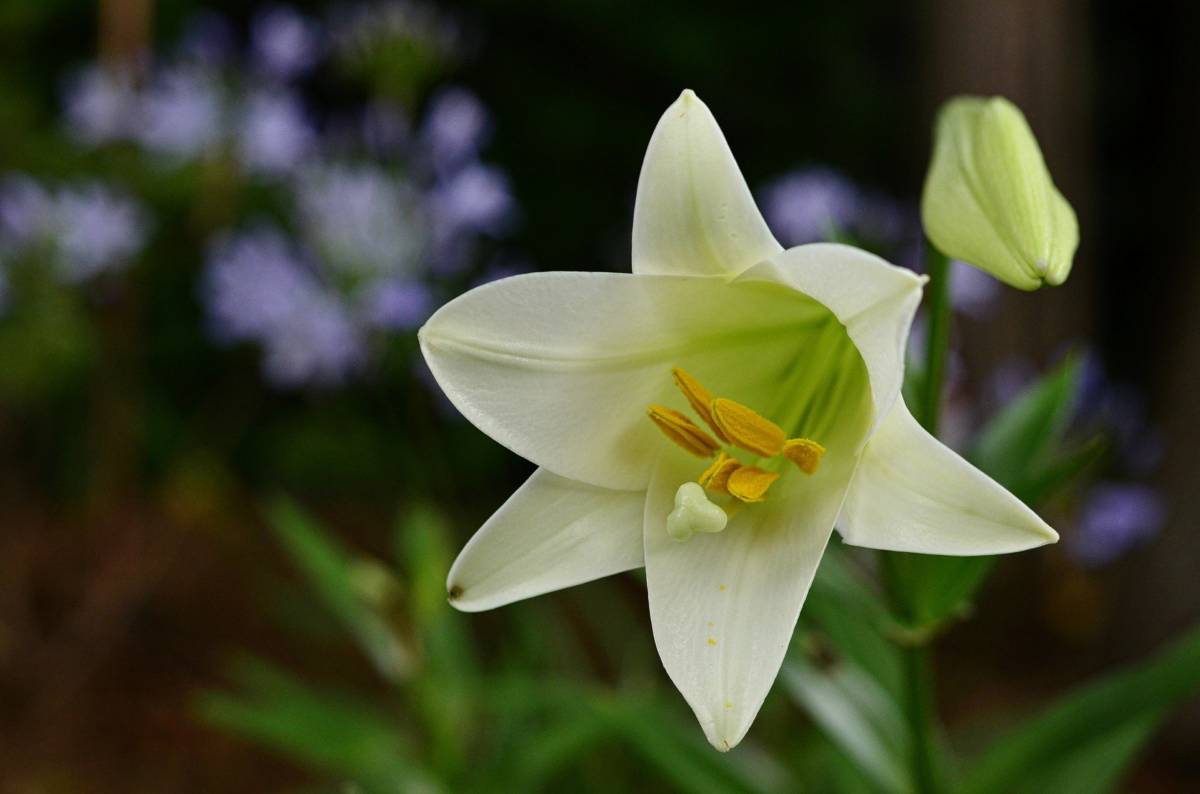How the Easter Lily Became the Most Popular Easter Flower
Pure white in color with a trumpet-like shape, the Easter lily has been associated with purity, innocence, and spring.
Mar 17, 2021
It’s almost Easter, and there’s only one flower that can truly capture the spirit of the holiday: the Easter lily. Pure white in color with a trumpet-like shape, it’s long been associated with purity, innocence, and spring, making it the perfect flower to welcome a fresh new season. But how did this little bloom come to be the most popular Easter flower? We’re about to dig into the full history of the Easter lily to see why it’s so closely tied to — and named after — Easter.
The Easter lily’s religious roots
Known to Christians as the “white-robed apostle of hope,” the Easter lily has been a religious symbol since the birth of Christianity — and is even mentioned in the Bible a few times.
“Consider the lilies of the field, how they grow…King Solomon in all his glory was not arrayed like one of these,” Jesus said during the legendary Sermon on the Mount, touting the grace and beauty of this simple white flower as more impressive than the holdings of the richest king in the Bible. After Jesus’ death and resurrection as told by the Christian faith, his admiration of white lilies began to take on an entirely new symbolism.
An Easter lily begins life as a modest bulb, and, after at least three years underground, blooms anew as a bright, fragrant flower. Similarly, the Bible says Jesus began life as a mere human, who after death, spent three days in a tomb before being born anew on Easter as a transformed holy being. And, appropriately enough, Nazareth, Jesus’ hometown, was an ancient Hebrew term for “flower.”
The distinctive shape of the Easter lily furthers the message of the holiday. Virginia-based florist Victoria Zachary of Flowerama Richmond explains that “just like other lilies, they have six petals, but this one is very unique because of its trumpet shape.” St. Bede, a 7th century Benedictine monk, wrote of the flower’s special form as a horn being blown to announce both Jesus’ resurrection and the start of spring, the season of rebirth in which nature’s color and glory returns.
On the first Easter, white lilies are said to have sprouted in the Garden of Gethsemane, where Jesus spent the final hours before his arrest and crucifixion. In the 15th century, Leonardo da Vinci’s painting The Annunciation depicts the Angel Gabriel handing the Virgin Mary a branch of the flower while announcing Jesus will be her son. Catholic doctrine also tells that three days after the Virgin Mary's burial, her tomb was opened and found to contain nothing but the purest white lilies.
Keeping your Easter lily in tip-top shape
Because commercially available lilies are not of divine origin, Victoria explains to make sure the lilies you purchase have been cleaned, to ensure they maintain their color and lifespan. "Like all lilies, the Easter lily’s pollinators must be removed so they don't stain the flower,” she says. “The yellow pollen they carry will drop off on the petals and not only make them less attractive, but also shorter their life." Though most all professional florists clean before sale, home-growers should take note.
Origins of the Easter lily
Lilium longiflorum, the regal bloom known as the Easter lily, is native to the Ryukyu Islands in the south of Japan. Prior to 1941, most Easter lily bulbs found in the U.S. were imported from this remote region. At the close of World War I, however, American soldier and floral buff Louis Houghton, who was stationed in Japan at the time, is said to have returned to his home in the Pacific Northwest with an entire suitcase of lily bulbs.
Having spent an extended time around the Easter lilies in the wild, Houghton had become aware of one draw that made the Longiflorum stand out from others of the mother species — its unique fragrance. Victoria explains, "Asiatic lilies don’t really have a fragrance, and Oriental lilies are somewhat fragrant, but the Easter lilies have a very strong, sweet smell. Stargazer or Casa Blanca lilies, many people buy two to get the fragrance, but an Easter lily, one plant will fill the whole house."

By 1942, Houghton’s prized bulbs had made their way into the hands of eager farmers and florists all along the Oregon and Northern California border, land with an ideal climate for lily growth. Before long, much like when cherry blossoms first traveled from America to the western world in 1906, the lily was no longer exclusive to the Far East, and within five years more than 1,000 West Coast growers were raising the flower.
The nearby Smith River region of California experienced such growth success that the import of lily bulbs from Japan began to slow, and before long the area now known as the "Easter Lily Capital of the World" was producing the finest bulbs in existence. To this day, 95% of all Easter lily bulbs in the U.S. originate from less than a dozen farmsteads between Smith River and Brookings, Oregon.
More than two millennia after the first Easter, the Longiflorum lily has become as synonymous with the holiday as hand-painted eggs and baskets of rabbit-shaped candy. The flowers are a springtime mainstay in homes and churches across the world, and, though named for a Christian holiday, the flowers embody a message of joy and hope that extends beyond faith. Easter lilies are a pleasant reminder to all that the promise of rejuvenation has arrived and nature’s cycle has begun anew.







